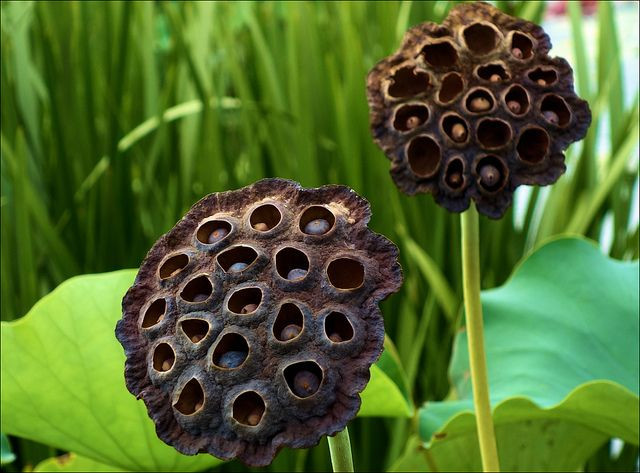Fear Of Holes? Trypophobia Is 'The Most Common Phobia You've Never Heard Of,' Researcher Says

Fear of heights, spiders, snakes, and darkness strike most people as reasonable phobias. Even when they seem exaggerated, these fears originate in clear, timeless danger elements: venomous stings, nasty bites, ambushes, and fatal falls. For this reason, most common phobias seem justified, even in situations where the phobic object doesn’t pose an actual threat.
But how do you explain the fear of holes?
Although it has yet to be recognized formally in the Diagnostic and Statistical Manual of Mental Disorders (DSM-V), many scientists and psychologists maintain the clinical existence of trypophobia – a bizarre, visceral aversion to clusters of holes. In most reported cases, the fear is generalized to include a diverse array of natural and artificial objects, including honeycombs, lotus seed pods, crumpets, and even coral structures. According to LiveScience, phobic stimuli may cause migraines, panic attacks, hot sweats, and surges in heart rates in sufferers.
“[Trypophobia] is the most common phobia you’ve never heard of,” said Geoff Cole, a psychologist at the University of Essex. A self-diagnosed trypophobic, Cole recently led an investigation into the fear’s evolutionary underpinnings. The findings suggest a widespread, predominantly latent phobia associated with an ancient threat.
"We think that everyone has trypophobic tendencies even though they may not be aware of it," Cole said in an accompanying press release. "We have an innate predisposition to be wary of things that can harm us."
According to the researchers, the original danger element is exemplified by a small group of rare, extremely venomous organisms. Though biologically diverse, these animals all conform to a very particular “spatial frequency” – repetitive spatial features of their appearance. The prime example is the blue-ringed octopus, whose spotted camouflage structure is an eerie approximation of common trypophobic stimuli.
In this sense, the fear of clustered, irregular holes may be similar to the fear of things that crawl. Rather than maintaining a vast set of discrete aversions, we construct a single, general phobia from the set’s common abstraction. Thus, pomegranates and honeycombs may act as innocuous “placeholder threats,” keeping the ancient fear going in the modern-day paucity of blue-ringed octopi and deathstalker scorpions.



























